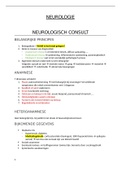Samenvatting
Summary articles Anxiety and related disorders
- Instelling
- Universiteit Utrecht (UU)
This is a summary of all the articles for the course Anxiety and related disorders for the Master clinical psychology. Every article is included EXCEPT: Menzies, R.G. & Clarke, J.C. (1995). The etiology of phobias: a non-associative account. Clinical Psychology Review, 15, 23-48.
[Meer zien]













